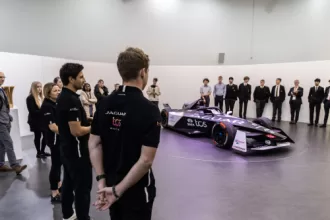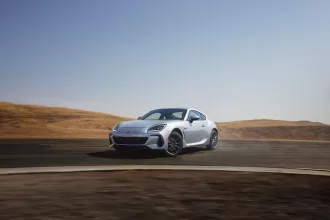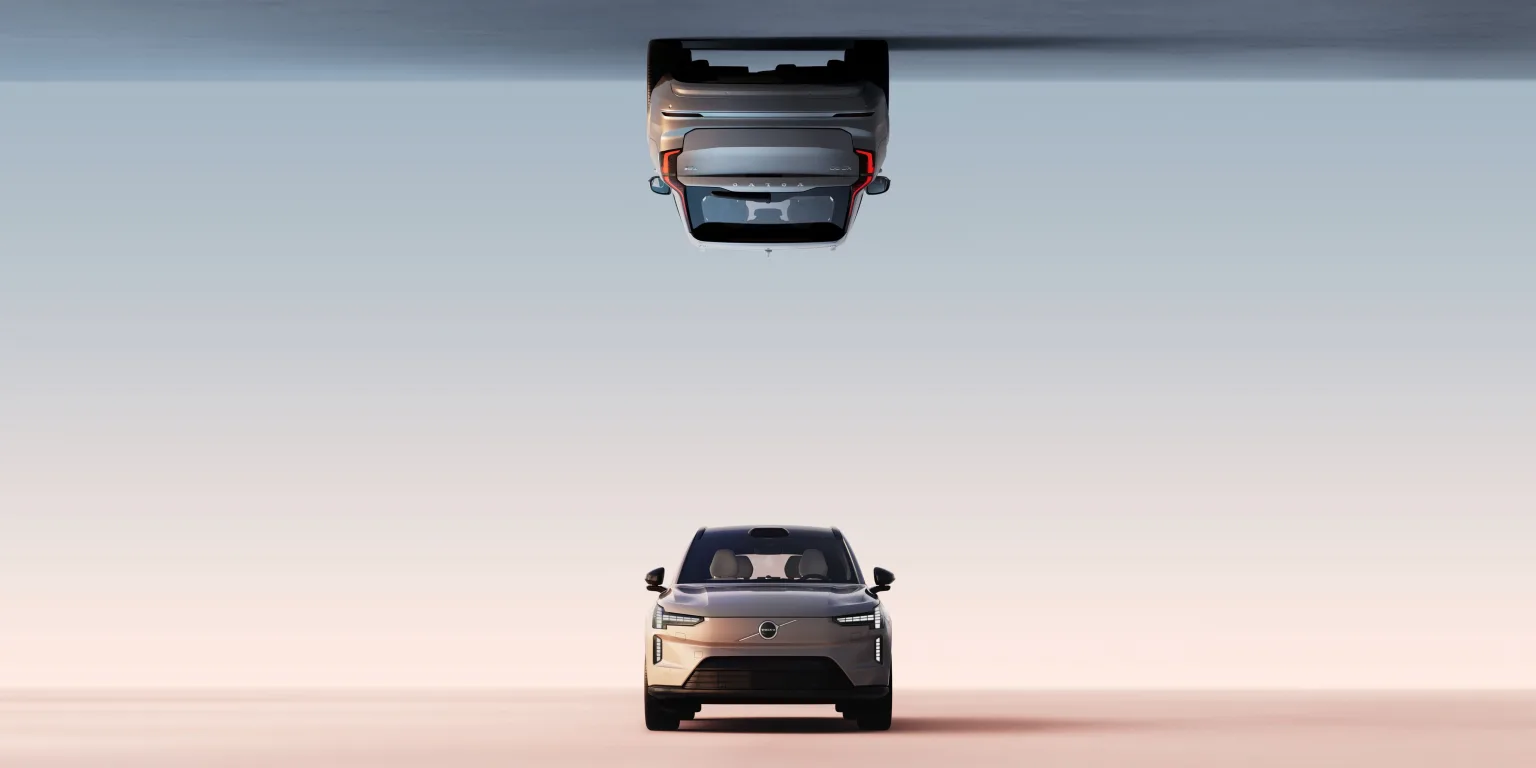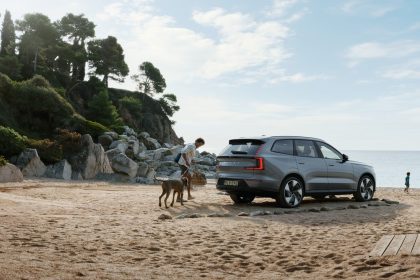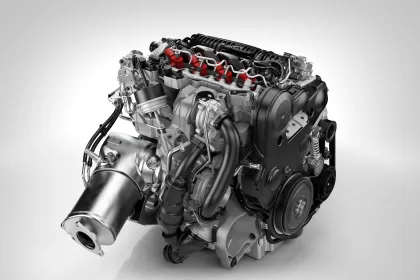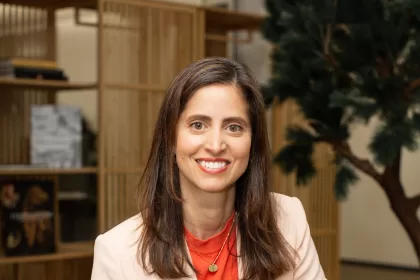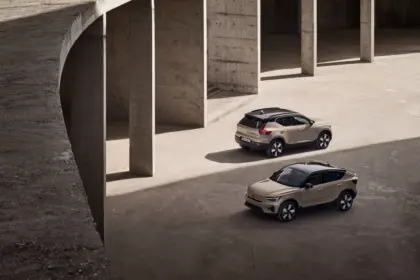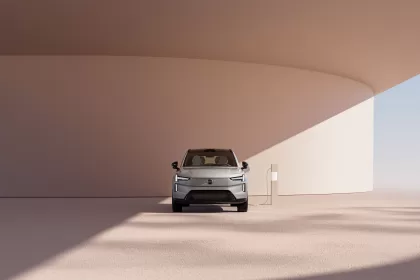- Q3 operating profit (excl. JVs and associates) was SEK 5.7 bn, vs SEK 6.1 bn in Q3 2023
- Q3 operating profit was 5.8 bn SEK, vs SEK 4.5 bn in Q3 2023
- Q3 EBIT margin (excl. JVs and associates) was 6.2 per cent, vs 6.7 per cent in Q3 2023
- Q3 EBIT margin was 6.2 per cent, vs 4.8 per cent in Q3 2023
- Q3 revenue was 93 bn SEK, vs 92 bn SEK in Q3 2023
- Q3 electrified share of sales at 48 per cent, vs 34 per cent in Q3 2023
- Q3 fully electric car sales share at 25 per cent, vs 13 per cent in Q3 2023
Volvo Cars reported a core operating profit (EBIT), excluding joint ventures and associates, of SEK 5.7 billion for the third quarter of 2024, versus SEK 6.1 bn for the same period in 2023.
Gross margins came in at 20.5 per cent for the third quarter, broadly in line with the company’s underlying operational gross margins for the first half of 2024. Revenues for the period amounted to SEK 93 billion and the core EBIT margin landed at 6.2 per cent. Free cash flow was around flat at SEK -0.4 billion.
As stated during its Capital Markets Day in September, Volvo Cars aims to outgrow the premium car market* and generate a core EBIT margin of 7-8 per cent as well as strong free cash flows from 2026 onwards. The company is determined to reach its ambitions and has a clear roadmap towards doing so.
However, achieving these ambitions will not be straightforward since the weakness in the market has recently accelerated – a fact also echoed in revised industry forecasts for 2024 and 2025 by third-party analysts. Overall industry demand continues to soften and is now affecting the premium segment.
“Our journey towards 2026 will not be linear, as our industry is facing an increasingly volatile environment,” says Jim Rowan, chief executive for Volvo Cars. “Macroeconomic headwinds are intensifying, as is geopolitical complexity. Despite these challenges we demonstrated resilience during the third quarter of 2024, which is reflected in our overall financial performance.”
Volvo Cars has grown faster than its premium peers this year. The company’s third-quarter sales rose by 3 per cent to 172,849 cars sold, with electrified models (fully electric and plug-in hybrid cars) representing 48 per cent of the total.
Volvo Cars’ electrified share was the highest for the premium car industry in Europe. For the first nine months, Volvo Cars sales increased by 10 per cent year-on-year. This gives the company a foundation to outgrow the premium car market in 2024, which is expected to grow by less than 1 per cent this year.
In Europe, Volvo Cars increased its market share to 2.4 per cent during the quarter, from 1.7 per cent in the same period last year, in an increasingly competitive market while retaining its premium pricing position. Although the market is softening, the company is encouraged by the strong performance of its balanced portfolio of fully electric (BEV) cars, plug-in (PHEVs) and mild hybrids. The EX30 remained among the best-selling EVs in Europe and the XC60 continues to be one of the most popular PHEVs in the region.
However, the car market in the company’s main regions of Europe, China and the US is increasingly under pressure which affects demand. Given this accelerating weakness in the market and Volvo Cars’ focus on safeguarding value over volume, the company expects minimal volume growth during the fourth quarter. As a result, it now anticipates full-year sales growth of 7-8 per cent, instead of its earlier forecast of 12-15 per cent.
Volvo Cars retained its premium position in China by focusing on price discipline, resulting in lower sales volumes. In the US, the performance of its electrified range remained solid, but here too the overall market has weakened. Lower interest rates may improve the situation over time in these markets and Volvo Cars continues to monitor developments and adapt accordingly.
Volvo Cars has actively adapted its sales and production plan to reduce inventory during the second half of the year. This is materialising according to plan, and the company remains focused on diligent inventory management. At the same time, it is also in the process of moving cars off its balance sheet in some European markets as part of its adjusted commercial approach.
The company is determined to safeguard value and cash, while working resolutely towards its 2026 ambitions. However, the revised full-year sales guidance of 7-8 per cent also affects Volvo Cars’ expectations for free cash flow for this year. While it continues to drive its free cash flows towards neutral for 2025 and strong from 2026, Volvo Cars now anticipates its full-year free cash flow to be single digit-negative in SEK bn for 2024, rather than neutral, due to the overall weakness in the market and resulting in lower sales expectations in the fourth quarter.
As the company reiterated during its Capital Markets Day, it is investing in new technologies, infrastructure and cars to ensure that it becomes a leader in next-generation mobility. Volvo Cars expects these planned investments to peak during the 2024-25 period. After this phase it plans to start generating strong free cash flows from 2026 onwards.
Looking ahead
Volvo Cars has five fully electric cars on the road, and five more in development. As previously communicated, it plans to start building the EX30 in its Ghent plant during the first half of 2025, with volumes ramping up in the second half.
The company also continues to invest in its hybrid cars, exemplified by the updated, ready-for-a-new-era version of the iconic XC90 plug-in hybrid SUV. By refreshing these and other hybrid models, Volvo Cars maintains a balanced product portfolio for the current marketplace. All this will allow it to outgrow the premium car market and take market share.
Volvo Cars is confident that this strong and balanced product portfolio will remain attractive going forward. Coupled with its premium brand positioning, this will help it to partly mitigate the effects of a weakening market.
The company expects the car industry to remain under pressure. Hence it is doubling down on actions to tackle these external challenges, to build an even more resilient company and further reinforce operational efficiencies.
The company’s internal cost efficiency initiative has already resulted in lower variable costs and remains a crucial focus area, and actions in this area will be accelerated. Improving cost efficiency is an ongoing exercise and a core part of how the company operates. Volvo Cars is looking at both investments as well as fixed and variable costs to lower its cost structure and free up cash.
“We cannot control the current geopolitical uncertainties and economic headwinds,” says Jim Rowan. “But we can navigate them with speed, purpose, and a clear focus. Our focus is more than ever on preserving cash while creating value – for our shareholders, customers and employees. We have proven before that we can handle challenges, and we will handle them again. Business is not a game of perfection, it is a game of progress. And despite current challenges, Volvo Cars is making progress. This is shown in our results, our technology, our talent, and ultimately our cars.”

